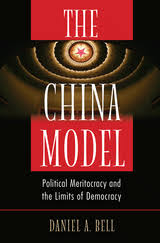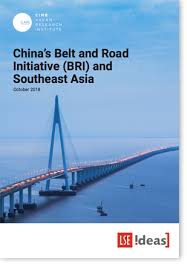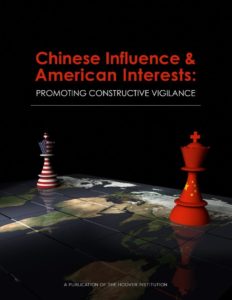 A growing number of analysts warn that China has emerged as a far more sophisticated rival than the U.S.S.R., capable of challenging not just the preeminence of the U.S. military but also its economic, scientific and cultural dominance to a degree the Soviet Union could never match, argues Gregory Mitrovich, a research scholar at Columbia University’s Saltzman Institute of War and Peace Studies and author of “Undermining the Kremlin: America’s Strategy to Subvert the Soviet Bloc, 1947-1956.”
A growing number of analysts warn that China has emerged as a far more sophisticated rival than the U.S.S.R., capable of challenging not just the preeminence of the U.S. military but also its economic, scientific and cultural dominance to a degree the Soviet Union could never match, argues Gregory Mitrovich, a research scholar at Columbia University’s Saltzman Institute of War and Peace Studies and author of “Undermining the Kremlin: America’s Strategy to Subvert the Soviet Bloc, 1947-1956.”
Indeed, under President Xi Jinping, China is openly confronting the United States around the world, he writes for the Washington Post:
China uses its growing economic power as both a stick and carrot to pressure political elites and steer them toward policies that conform to Chinese objectives while also emerging as a major technological competitor with ambitions to supplant the United States as the world’s leader in key technologies by 2025. And the China Dream has emerged as a cultural and ideological challenge to the liberal democracy promoted by the United States.
“But for all its achievements, China has yet to achieve the Soviet Union’s combination of political, military and cultural strength that enabled the Kremlin leaders to challenge the United States in every corner of the world, nearly undermining America’s efforts to reconstruct postwar Europe,” he adds.
Faustian bargain
 China now proposes to export its model to Southeast Asia, Central Asia, Latin America, parts of the Middle East and Africa, argues David P. Goldman, the Spengler columnist for Asia Times Online and Senior Fellow at the London Center for Policy Studies. This involves a Faustian bargain of sorts; the same technologies that have lifted billions of East Asians out of dire poverty and the ever-present risk of starvation into prosperity and economic security can also give dictatorial regimes previously unimagined tools for social control. China’s Belt and Road Initiative (BRI) has a $1 trillion war chest for infrastructure investments and export loans, he writes for the Tablet:
China now proposes to export its model to Southeast Asia, Central Asia, Latin America, parts of the Middle East and Africa, argues David P. Goldman, the Spengler columnist for Asia Times Online and Senior Fellow at the London Center for Policy Studies. This involves a Faustian bargain of sorts; the same technologies that have lifted billions of East Asians out of dire poverty and the ever-present risk of starvation into prosperity and economic security can also give dictatorial regimes previously unimagined tools for social control. China’s Belt and Road Initiative (BRI) has a $1 trillion war chest for infrastructure investments and export loans, he writes for the Tablet:
The Chinese economic model is only a souped-up, bigger and more ruthless version of the Asian model that began with Japan’s restoration of the Emperor Meiji in 1868, and was replicated by South Korea and Taiwan: Move subsistence farmers to the cities and build factories for them to work in. While its per capita GDP rose 35 times, China moved 550 million people from the countryside to the cities, and it built the equivalent of all of the cities of Europe to house them.

LSE
“Modernization in China isn’t the enclave of a middle-class modernity, as in India, but a movement that reaches into the capillaries of society,” Goldman adds. “Entrepreneurs in Chinese villages connect to the world market through mobile broadband, sell their products and buy supplies on the Alibaba platform, and obtain credit from microfinancing platforms. Information and capital flow down to the roots of the economy and products flow back up to the world market.”

 Institutions of higher learning around the world should resist the
Institutions of higher learning around the world should resist the 





